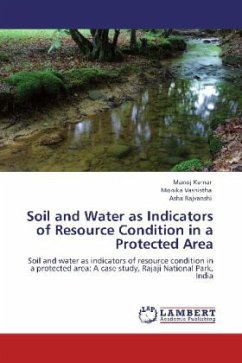
Man-Animal Conflict in and around Gir protected area
Conflict situation between Man and large predator in and around Gir PA, Gujarat, India
Versandkostenfrei!
Versandfertig in 6-10 Tagen
52,99 €
inkl. MwSt.

PAYBACK Punkte
26 °P sammeln!
The close proximity of wild animals to human settlements in the Gir forests has given rise to a number of management problems. The extensive agricultural lands around Gir are blessed with fertile black cotton soil on which the farmers grow a whole variety of crops including fruits. Wild herbivores, particularly wild boar, nilgai, chital, porcupine and to some extent chinkara and blackbuck as well, cause extensive damage to these crops. At the same time, lions and leopards have also been making frequent forays into the peripheral areas to predate on livestock. The cases of lion and leopard atta...
The close proximity of wild animals to human settlements in the Gir forests has given rise to a number of management problems. The extensive agricultural lands around Gir are blessed with fertile black cotton soil on which the farmers grow a whole variety of crops including fruits. Wild herbivores, particularly wild boar, nilgai, chital, porcupine and to some extent chinkara and blackbuck as well, cause extensive damage to these crops. At the same time, lions and leopards have also been making frequent forays into the peripheral areas to predate on livestock. The cases of lion and leopard attacking people are also on the rise, a good percentage of which are fatal.












